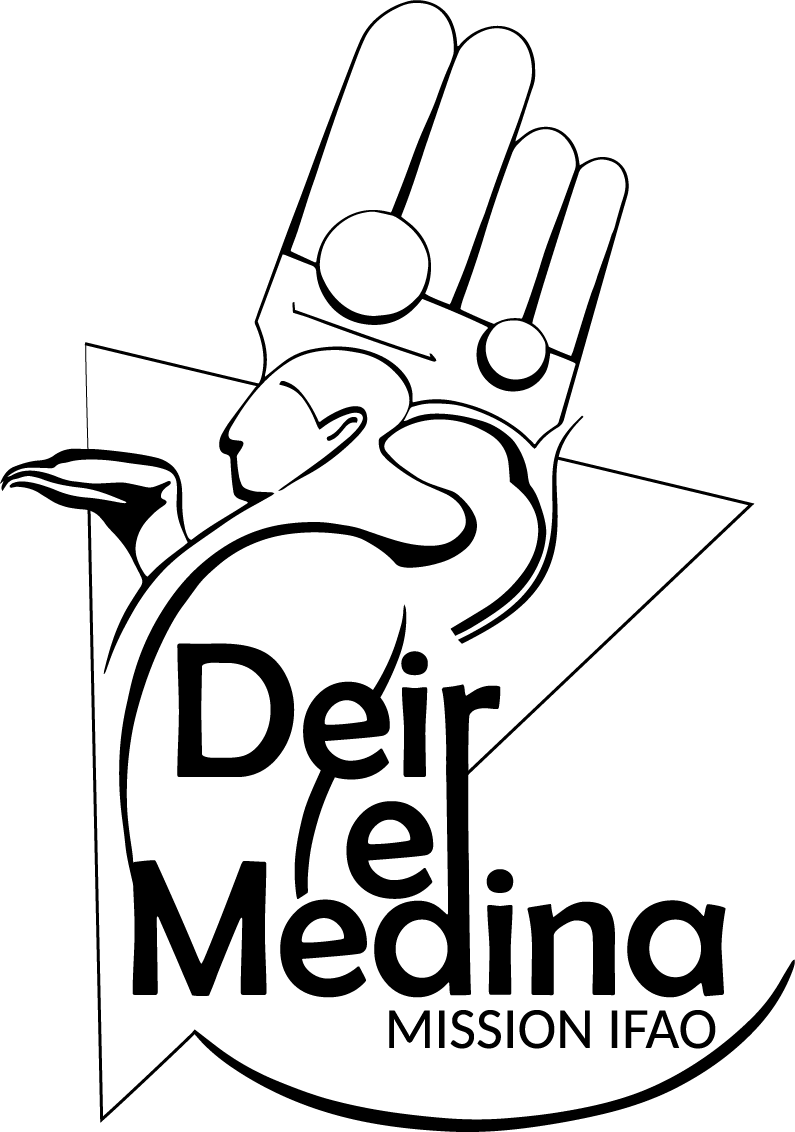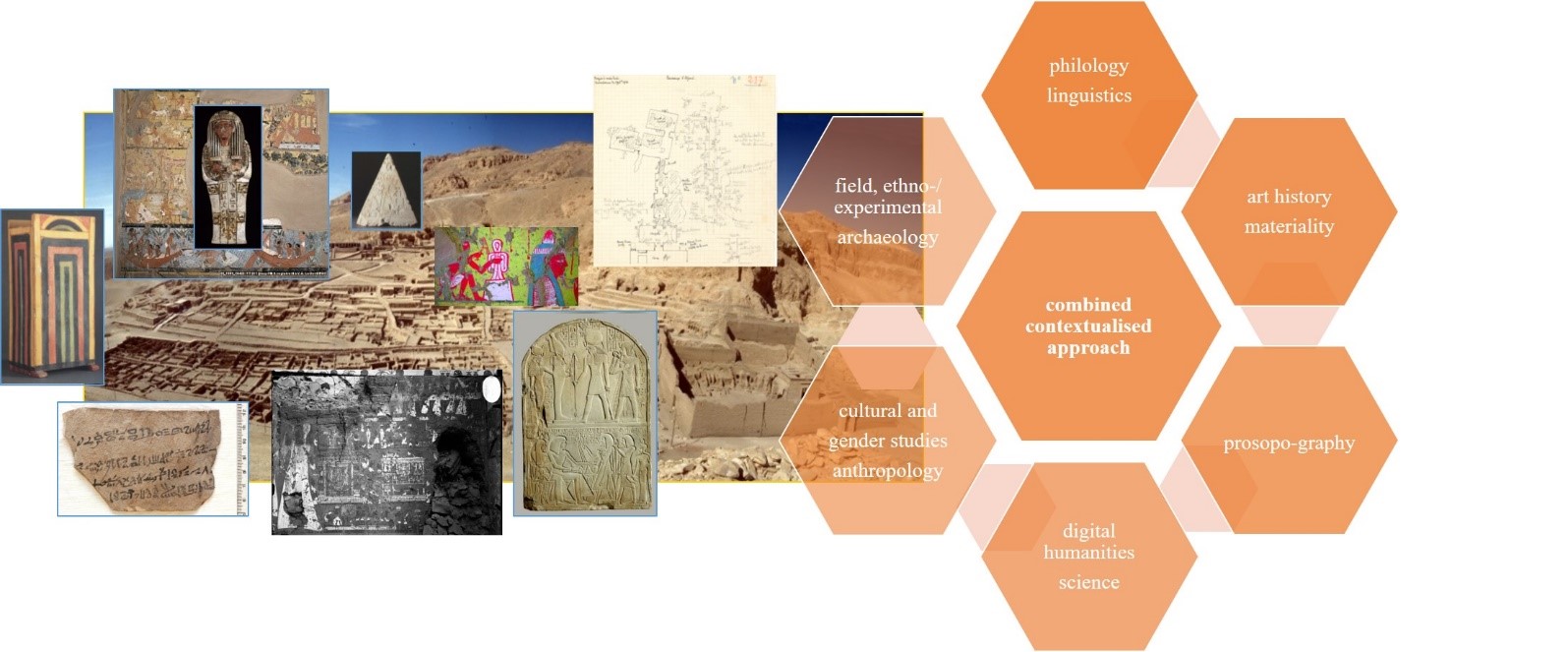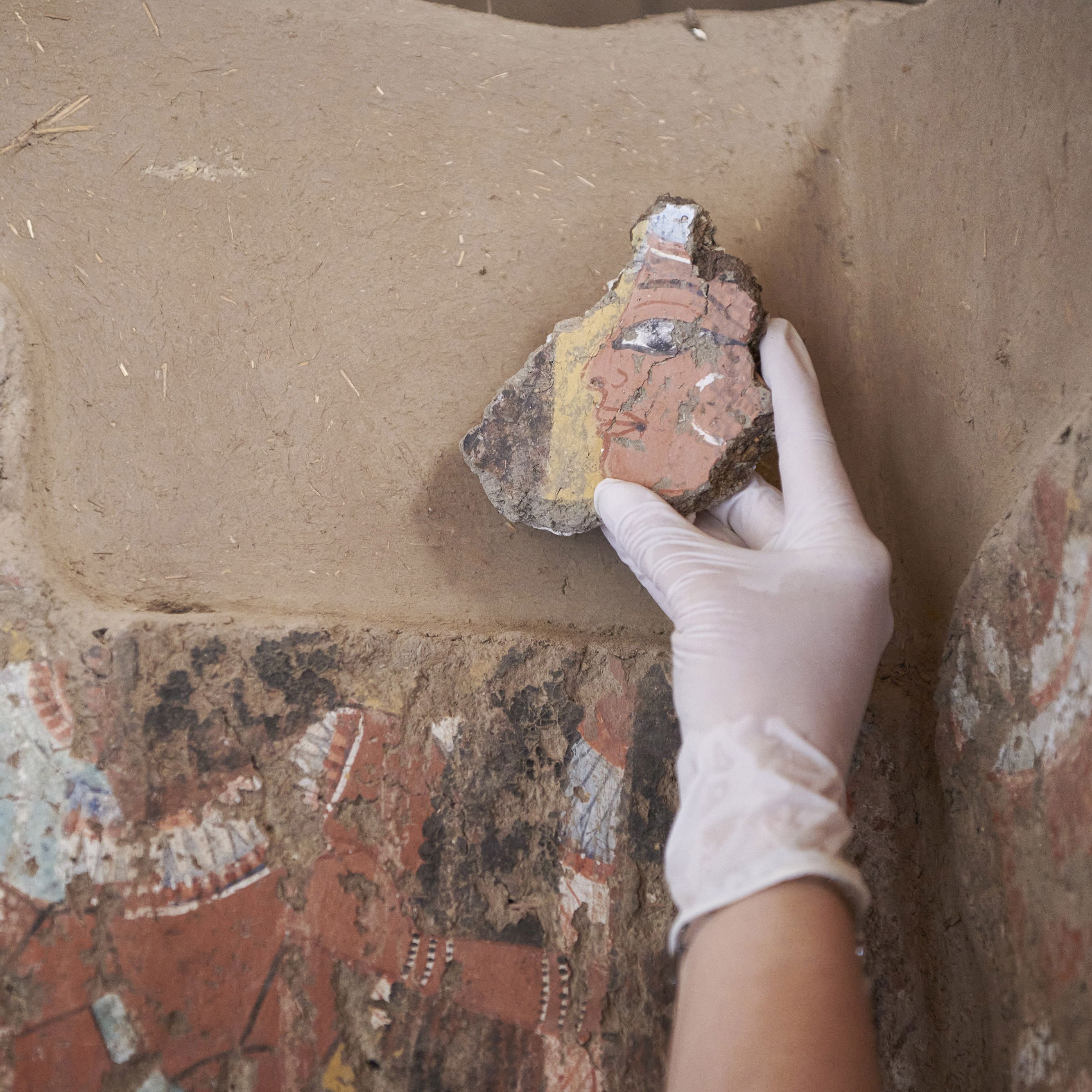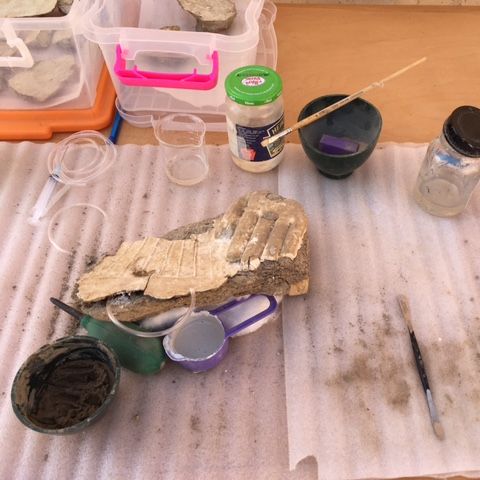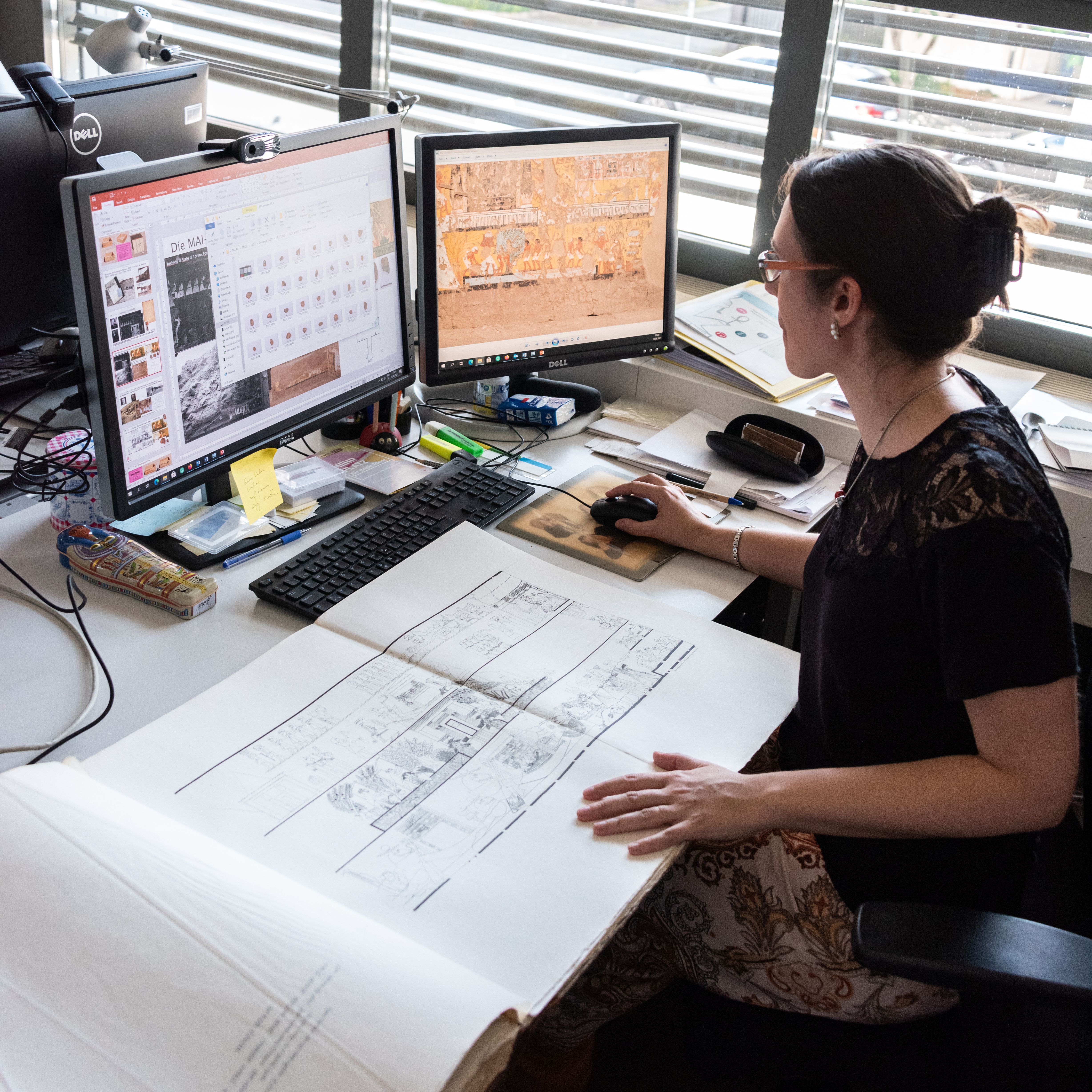This project aims to re-investigate the entire funerary complex and to document it using contemporary archaeological methods. Drawing on both the site and various objects associated with it (now held in various museums around the world), it aims to present a complete ‘biography’ of the tomb through to the present day.
This process will include archaeological work (surveys and cleaning), documentation (including the production of high-resolution photos and 3D scans for photogrammetric models), and analysis of the surviving structures (including the creation of new architectural plans according to modern technical standards). The virtual reconstruction of the chapel’s decorations (drawing on archival documents and the computer-assisted relocation of wall and statue fragments) will be of special importance, as will stylistic, iconographic, and palaeographic analyses. Each step in the process, as well as all the results, will be imported into ResearchSpace Deir el-Medina. This open-access platform will thus represent a continuously evolving research infrastructure. From the documentation of our working steps through to its virtual reconstructions, it will provide a paradigmatic case-study for other heritage projects dealing with large and diverse data-sets, as well as opening up this exceptional tomb to the 21st-century scholarly world and to the public.
Work on ResearchSpace Deir el-Medina and TT 217 is already well underway, with support from geological experts at the University of York and SwissTopo. A pilot phase is in progress (March 2022 to June 2023) and is funded by the Research Fund Junior Researchers of the University of Basel, in cooperation with ResearchSpace and Kartography Community Interest Company.
